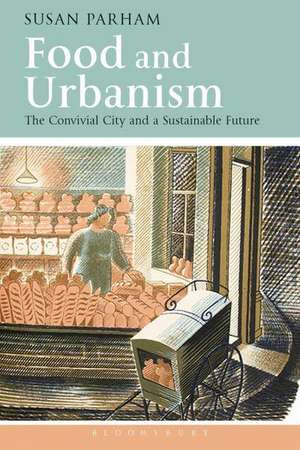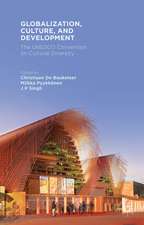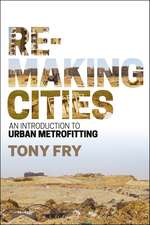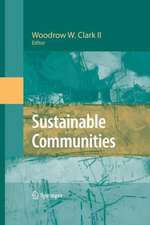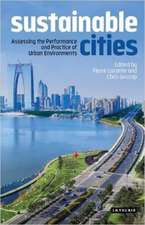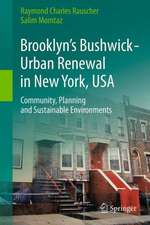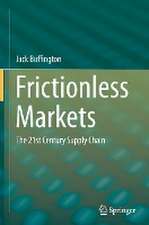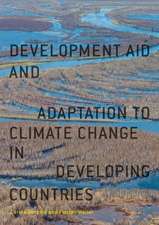Food and Urbanism: The Convivial City and a Sustainable Future
Autor Susan Parhamen Limba Engleză Paperback – 25 feb 2015
| Toate formatele și edițiile | Preț | Express |
|---|---|---|
| Paperback (1) | 202.22 lei 6-8 săpt. | |
| Bloomsbury Publishing – 25 feb 2015 | 202.22 lei 6-8 săpt. | |
| Hardback (1) | 835.51 lei 6-8 săpt. | |
| Bloomsbury Publishing – 25 feb 2015 | 835.51 lei 6-8 săpt. |
Preț: 202.22 lei
Preț vechi: 232.87 lei
-13% Nou
Puncte Express: 303
Preț estimativ în valută:
38.69€ • 40.51$ • 32.02£
38.69€ • 40.51$ • 32.02£
Carte tipărită la comandă
Livrare economică 07-21 aprilie
Preluare comenzi: 021 569.72.76
Specificații
ISBN-13: 9780857854537
ISBN-10: 0857854534
Pagini: 376
Ilustrații: illustrations
Dimensiuni: 156 x 234 x 23 mm
Greutate: 0.57 kg
Editura: Bloomsbury Publishing
Colecția Bloomsbury Academic
Locul publicării:London, United Kingdom
ISBN-10: 0857854534
Pagini: 376
Ilustrații: illustrations
Dimensiuni: 156 x 234 x 23 mm
Greutate: 0.57 kg
Editura: Bloomsbury Publishing
Colecția Bloomsbury Academic
Locul publicării:London, United Kingdom
Caracteristici
Presenting original research and case studies alongside objective analysis and synthesis, this will be of great value to researchers
Notă biografică
Susan Parham is Head of Urbanism at the Centre for Sustainable Communities, University of Hertfordshire, UK.
Cuprins
DedicationPrefaceAcknowledgementsList of IllustrationsIntroduction: Food and Urbanism: the Convivial City and Sustainable FuturePart One: Food, Domesticity and DesignThe Paradoxical Kitchen and the Death of DiningThe Garden and Gastronomy Part Two: Gastronomy and Public SpaceFood's Outdoor Room The Gastronomic Townscape Ambivalent SuburbiaConvivial Green Space Part Three: Food Space on the EdgeThe Productive Periphery The Megalopolitan Food RealmDesigning the Critical Food Region Food and Urbanism in a Global Context Conclusion: Food and Urbanism - Making a Resilient City BibliographyIndex
Recenzii
[Food and Urbanism] is a book that will find a role as an essential reference for anyone with any interest in food and a positive gold mine for any postgraduate student starting on their research into any aspects of food or urban-food relationships.
The book follows a logical progression from table and garden to the city edges and the larger region, each chapter providing a comprehensive review of the relevant literature from a diversity of disciplines.
With vivid examples and sparkling clarity, Parham illustrates how food has served as the bridge between private homes and public markets, neighborhoods and regions, and physical spaces and culturally distinct places. A timely and important contribution for anyone interested in how these linkages offer clues for building a more sustainable future.
Parham's Food and Urbanism is a thrilling read from start to finish, providing a fascinating insight into the complex relationship between food and the city: from urban agriculture to food branding and beyond. The impressive array of topics covered, combined with the interdisciplinary nature of the text, results in a piece which will be of interest to sociologists, geographers, planners, urban designers and other actors interested in this area of research.
Through Parham's powerful prose, gastronomy is revealed as a key ingredient of social justice, cultural understanding and genuinely sustainable forms of urban existence. Crucial reading for anyone studying, critiquing, designing and planning cities, this book brings critical food studies into a direct conversation with 21st-century urbanism.
The book follows a logical progression from table and garden to the city edges and the larger region, each chapter providing a comprehensive review of the relevant literature from a diversity of disciplines.
With vivid examples and sparkling clarity, Parham illustrates how food has served as the bridge between private homes and public markets, neighborhoods and regions, and physical spaces and culturally distinct places. A timely and important contribution for anyone interested in how these linkages offer clues for building a more sustainable future.
Parham's Food and Urbanism is a thrilling read from start to finish, providing a fascinating insight into the complex relationship between food and the city: from urban agriculture to food branding and beyond. The impressive array of topics covered, combined with the interdisciplinary nature of the text, results in a piece which will be of interest to sociologists, geographers, planners, urban designers and other actors interested in this area of research.
Through Parham's powerful prose, gastronomy is revealed as a key ingredient of social justice, cultural understanding and genuinely sustainable forms of urban existence. Crucial reading for anyone studying, critiquing, designing and planning cities, this book brings critical food studies into a direct conversation with 21st-century urbanism.
